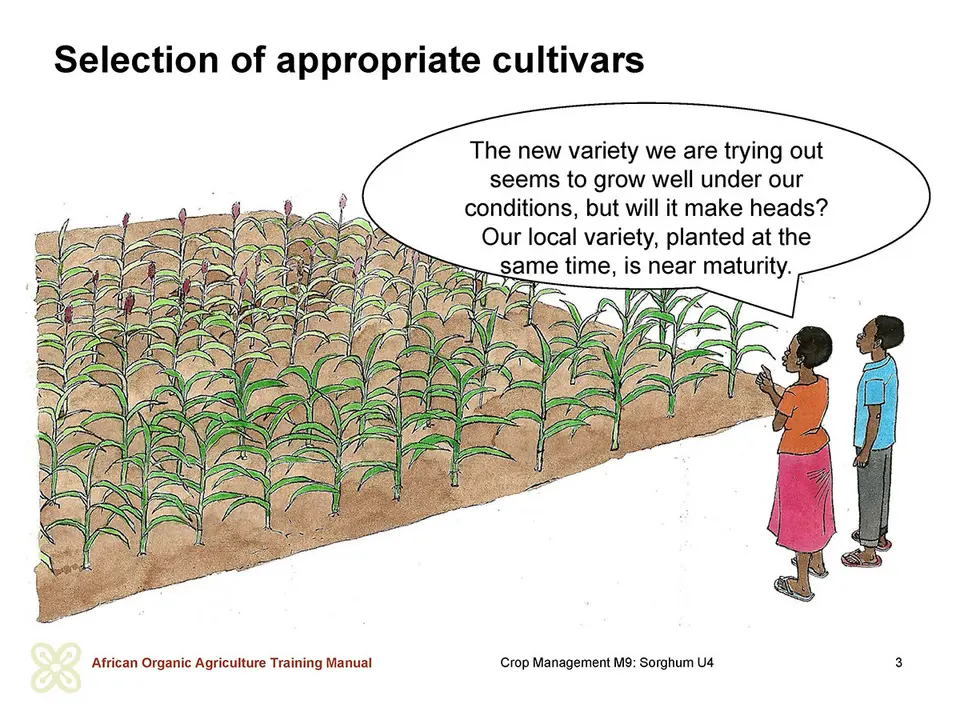Selection of appropriate varieties and good quality seeds
Many landraces of sorghum exist. All are adapted to specific growing conditions such as sandy or clayey soils, cold or hot season and different water conditions such as rain-fed cultivation, irrigation or drought. High-yielding improved cultivars and hybrids of sorghum are available in many African countries. But improved sorghum cultivars are not yet widely grown in Africa, because of the limited access to such seeds in many areas. Presently, improved varieties only account for about 10 percent of all seeds.
Improved varieties are characterised by higher grain yield, improved nutritional value of the grains and better processing quality, as well as resistances or tolerances to the major diseases and pests. Most improved cultivars combine high grain yield with high stover yields to provide animal feed from the residues. Striga-resistant cultivars are also available such as the Framida variety in Ghana and Burkina Faso. But compared to landraces the grain quality and hardiness of improved varieties is generally lower.
Recommendations to farmers for selecting good sorghum varieties:
- When farmers use own seeds, they should ensure that they use carefully selected as well as pest and disease free seeds only.
- Any variety should have been tested under local conditions by farmers or research stations before it is grown on a larger area. The selected variety must be adaptable to local climatic stresses, particularly in semi-arid and arid climates.
- The variety should not be highly susceptible to common insect pests and diseases.
- Generally, early and uniform maturing varieties can be quickly harvested before pest and disease infestation increases. Under irrigation, however, varieties with longer maturity periods are preferable because they will produce higher yields.
- Logding is a common problem of sorghum. Tall varieties tend to be more sensitive to lodging than shorter varieties. Shorter varieties also have the advantage of facilitating harvest.
- Some sorghum varieties are preferred for certain purposes. For example, red and brown grains are preferred for livestock feed as silage and for brewing purposes. There is also an increasing interest in sorghum varieties that produce good grain yields at uniform time and leave considerable amounts of leaves as animal feed (dual purpose sorghum).
Generally, using good agronomic practices can increase yields by at least 40 to 50 percent. In Uganda, for instance, yields of 800 kg per hectare have been recorded for well managed local varieties. Farmers should therefore contact the appropriate governmental organisations or extension agencies in their localities for the right choice of sorghum varieties.
Discussion: The local sorghum seed situation
Ask the farmers which varieties of sorghum are available locally and how selection of seeds is handled by asking the following questions:
- What do you normally consider when selecting the sorghum varieties to grow?
- Are improved varieties available? If yes, how have they performed locally?
- How do you select and store seeds for the next season’s crop?
Discuss the local approaches, taking note of any shortcomings, and then introduce the recommendations that follow.

 tap and then scroll down to the Add to Home Screen command.
tap and then scroll down to the Add to Home Screen command.